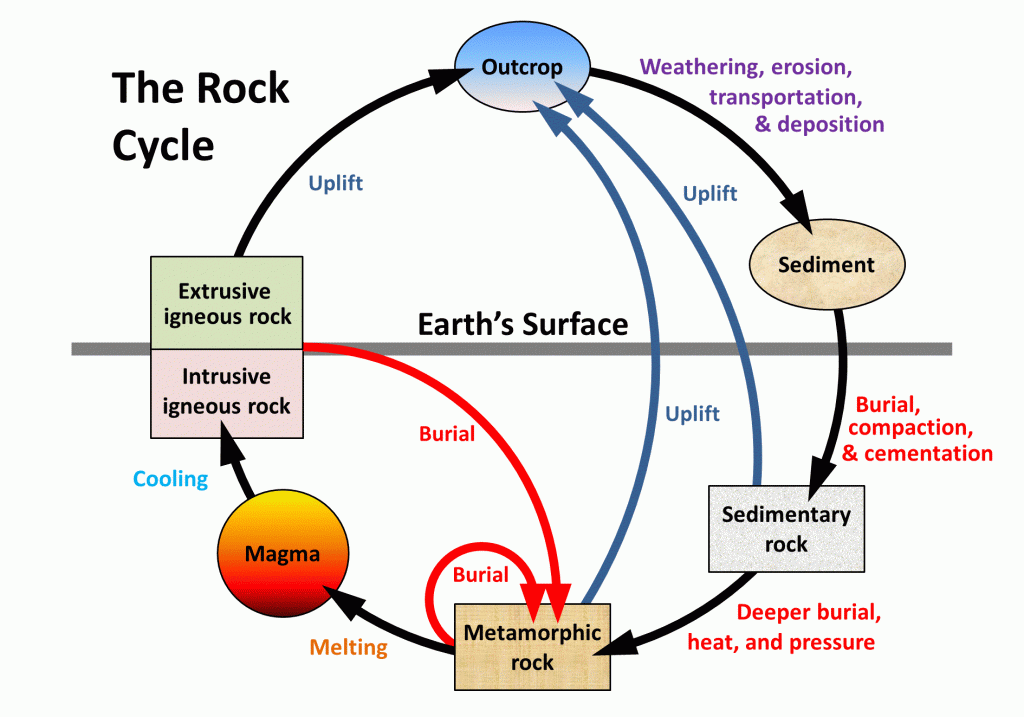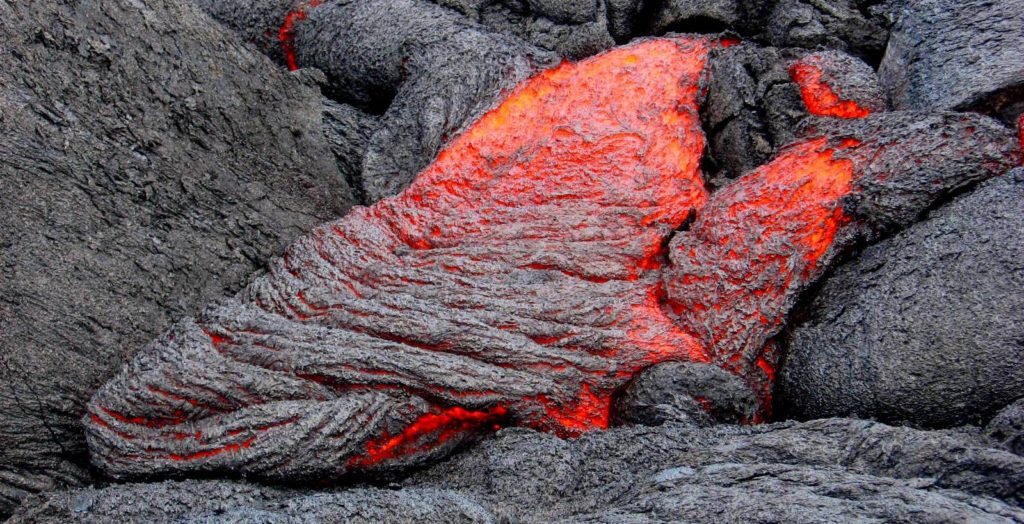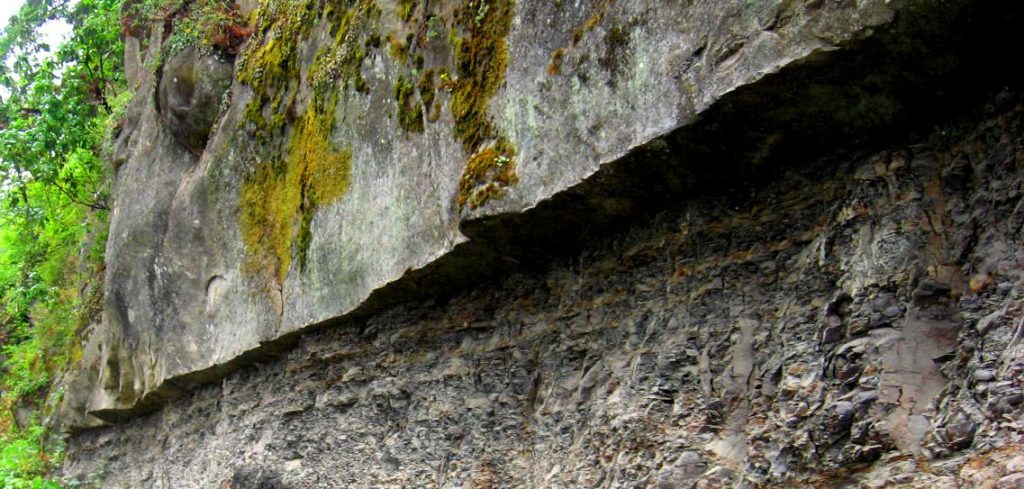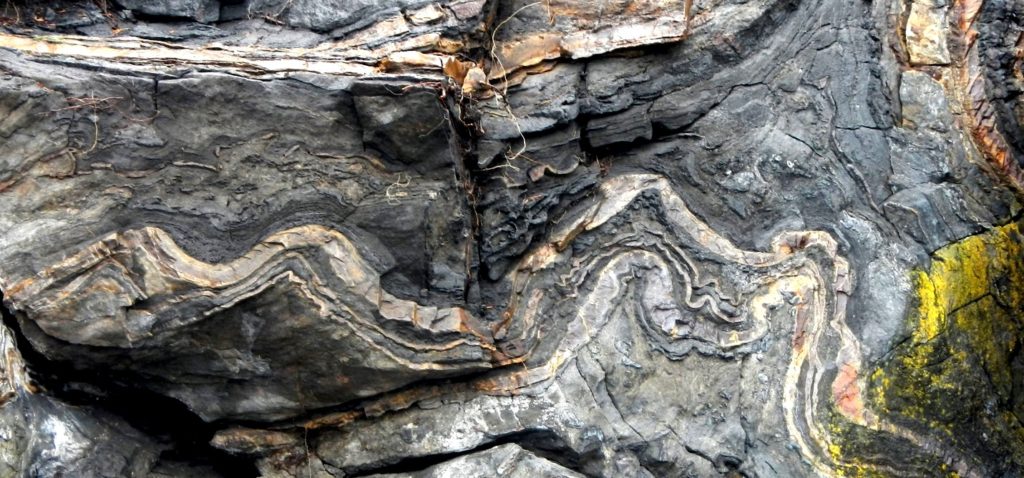Do You Think Igneous Rock Can Become Magma Again? Why or Why Not?
3.one: The Rock Wheel
- Page ID
- 7750
The rock components of the crust are slowly but constantly being inverse from one form to another and the processes involved are summarized in the rock cycle (Effigy \(\PageIndex{1}\)). The rock cycle is driven by 2 forces: (one) Earth'due south internal heat engine, which moves material effectually in the core and the mantle and leads to slow only significant changes within the chaff, and (ii) the hydrological bicycle, which is the move of water, ice, and air at the surface, and is powered by the sun.
The rock bicycle is still active on Globe because our cadre is hot plenty to continue the pall moving, our atmosphere is relatively thick, and we have liquid water. On some other planets or their satellites, such every bit the Moon, the stone bicycle is near expressionless because the cadre is no longer hot enough to drive drape convection and in that location is no atmosphere or liquid h2o.

In describing the rock cycle, we tin can start anywhere we like, although information technology'southward convenient to offset with magma. As we'll run across in more than detail below, magma is rock that is hot to the bespeak of being entirely molten, with a temperature of between about 800° and 1300°C, depending on the limerick and the pressure.

Magma tin can either cool slowly within the crust (over centuries to millions of years)—forming intrusive igneous rock, or erupt onto the surface and cool quickly (inside seconds to years)—forming extrusive igneous rock (volcanic rock) (Figure \(\PageIndex{2}\)). Intrusive igneous rock typically crystallizes at depths of hundreds of meters to tens of kilometers beneath the surface. To change its position in the rock bike, intrusive igneous rock has to exist uplifted and then exposed by the erosion of the overlying rocks.
Through the various plate-tectonics-related processes of mountain building, all types of rocks are uplifted and exposed at the surface. Once exposed, they are weathered, both physically (by mechanical breaking of the stone) and chemically (by weathering of the minerals), and the weathering products—mostly small rock and mineral fragments—are eroded, transported, and then deposited as sediments. Transportation and deposition occur through the action of glaciers, streams, waves, wind, and other agents, and sediments are deposited in rivers, lakes, deserts, and the body of water.
Exercise iii.1 Rock around the rock-bike clock
Referring to the rock cycle (Figure \(\PageIndex{1}\)), list the steps that are necessary to bike some geological material starting with a sedimentary rock, which then gets converted into a metamorphic rock, and eventually a new sedimentary rock.
A bourgeois judge is that each of these steps would accept approximately xx million years (some may exist less, others would be more than, and some could be much more). How long might it accept for this entire process to be completed?
See Appendix iii for Practice 3.ane Answers.

Unless they are re-eroded and moved along, sediments will somewhen exist buried by more sediments. At depths of hundreds of meters or more, they go compressed and cemented into sedimentary stone (See Effigy \(\PageIndex{three}\) for example). Again through various means, largely resulting from plate-tectonic forces, dissimilar kinds of rocks are either uplifted, to be re-eroded, or cached deeper within the crust where they are heated upwards, squeezed, and changed into metamorphic rock (Figure \(\PageIndex{4}\))

Images Attributions
- Figure \(\PageIndex{1}\), iii.1.ii, iii.1.3, 3.1.4: © Steven Earle. CC BY.
pepperthavercuris.blogspot.com
Source: https://geo.libretexts.org/Bookshelves/Geology/Book%3A_Physical_Geology_(Earle)/03%3A_Intrusive_Igneous_Rocks/3.01%3A_The_Rock_Cycle
0 Response to "Do You Think Igneous Rock Can Become Magma Again? Why or Why Not?"
Post a Comment